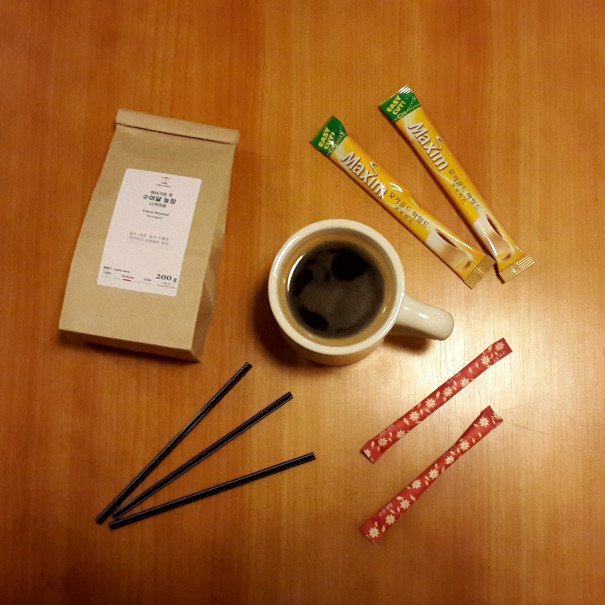
The Americano in Korea

The Americano in Korea
Coffee in South Korea
I thought Korea would be a tea country. It’s a major green tea producer and every guidebook lists visiting a tea house in Seoul as a “must” experience. But I’ve been living here for months, and nobody has ever invited me for tea. Coffee, on the other hand, is everywhere. Toss a stone and you’re bound to break the window of an Angel-In-Us, A Twosome Place, Ediya Coffee, Caffé Bene or Holly’s, all ubiquitous coffee shop chains, not to mention dozens upon dozens of independent coffee shops and stands.
I love coffee and make a point of immersing myself in local coffee culture wherever I go. So when I got here, I was eager to see: would Korean coffee be like a New Zealand flat white or a Spanish cortado? Is it refined like French latte or Italian cappuccino, or more like the humble American “mud” or cup o’ Joe? Do they take it super sweet, Cuban style, or with a dash of liquor Viennese style? Would it be cooked in an elegant bronze pot, like in Istanbul, or perhaps Korea takes after its neighbor, Japan, with some variation on origami coffee for the home?
When I first asked my closest friend here what kind of coffee Koreans drink, he looked at me with a sheepish, slightly embarrassed look. We were at the supermarket, so he took me to the coffee aisle and reached for a bright yellow box of Maxim’s “keo-pi mik-suh” (Coffee Mix). “This,” he replied.
The packaged tubes of instant powdered coffee were, until recently, what most Koreans drank to power themselves through the day. I decided to buy some. After one sip, I suddenly felt like I had unraveled the mystery of Korea’s economic miracle, why the nation never sleeps. Maxim’s is now my drink of choice for late-night work binges.
I learned later, over some cups of “Dutch coffee,” a slow-drip premium preferred among coffee snobs here, that Maxim’s was now uncool. The latest coffee craze here was the Americano. Listen in at the register of any coffee shop, and that’s what you’ll hear people ordering. I’ll be frank, I hate the Americano. I mean, who thinks that a watered down espresso could ever be a quality coffee experience? What’s more, as an American who’s lived in Europe, I have a personal axe to grind about the confusion around the misnamed “Americano”. No, it is not Americans’ preferred form of coffee!
Still, digging deeper into this sudden rise of the Americano, I began to rethink the drink’s appeal for Koreans in broader cultural terms. The first explanation I found was status: a cup of coffee in Korea is expensive. Periodically, newspapers will run editorials lamenting the sad case of the working girl on her lunch break, who pays 5,000 won for a set menu, and then another 5,000 won to be seen drinking a cup of coffee at Starbucks.
The Americano is also weak coffee. It’s palatable to those who don’t really like coffee. By and large, Korean coffee culture is that of mass consumer culture – an American style of franchised consumerism ramped up by Korea’s “Chaebol” mega-corporations. If you’re looking for convenient conformity, the Americano is the drink for you.
When I ask my students: but why coffee? Why not tea? I get a third clue: “Because tea’s too complicated to serve.” Korean tea has a rich tradition, elaborate etiquette, and many rituals surrounding how it’s served and for what occasions. This is how the Americano has conquered Korea. Tea is the messy burdensome past, coffee the hopeful, carefree future—even if it does taste bad.